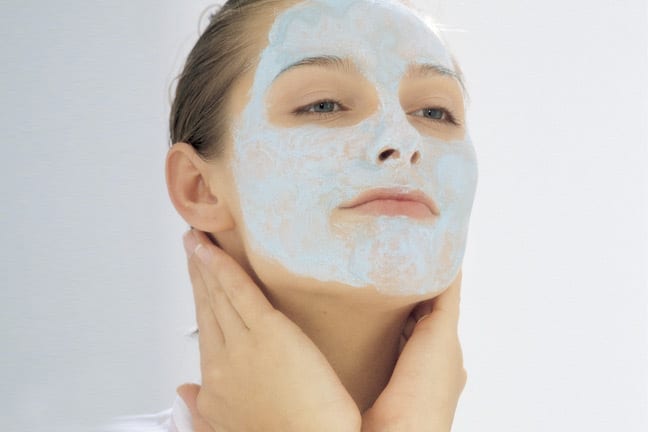Scan the beauty store skincare aisles and you’re likely to be overwhelmed by a slew of dermatologist-grade ingredients: glycolic acid, vitamin C and retinol, to name a few.But just because these potent anti-aging ingredients are readily available, it doesn’t mean you should slather them all over your face at once. “More isn’t always better,” says Annie Chiu, M.D., a general and cosmetic dermatologist in Los Angeles. “Too many products can cause irritation and breakouts.”Follow our potent anti-aging ingredient guide below to find your skincare regimen’s sweet spot.
MORE: Get Your Best Skin Routine
Glycolic Acid
What it does: This fruit acid—also known as an alpha-hydroxy acid (AHA)—exfoliates dead skin cells, fades hyperpigmentation and brightens your complexion. Over-the-counter formulations contain anywhere from three to 10 percent concentrations of glycolic acid.
Best for: A versatile, natural anti-ager, glycolic acid, “can be used on any age group or skin type from the late 20s on,” says Dr. Chiu.
Make it work: Overdoing this potent AHA can leave skin red, raw and photosensitive (translation: more susceptible to sun damage). Normal skin types choosing an at-home variation (such as Origins Brighter By Nature High-Potency Brightening Peel with Fruit Acids, $38) should start using the product gradually—about twice a week—until your complexion builds tolerance, suggests Marina Peredo, M.D., founder of Marina I. Peredo Dermatology in Smithtown, NY. “Eventually, you can use a pad morning and night to maintain smooth skin,” she says.Dr. Peredo also recommends investing in a lower strength product and working your way up to the higher ones. If your skin is more sensitive, or if you prefer a stronger peel, visit your dermatologist every six weeks to do a treatment under supervision, she suggests. On days you apply glycolic acid to your skin, avoid ingredients like vitamin C and retinol, which can irritate new skin. And always wear a good mineral sunscreen, emphasizes Peredo. (We like La Roche-Posay Anthelios 50 Mineral Ultra Light Sunscreen SPF 50, $33)
QUIZ: Are You Using Too Many Skincare Products?
Salicylic Acid
What it does: One of the most well-known phenolic (plant) acids, this mild ingredient effectively regulates sebum production and even possesses antibacterial properties.
Best for: Acne-prone skin.
Make it work: It’s tempting to heap on salicylic acid to keep blemishes at bay, but with this acne buster, finding the right balance is key. “Salicylic acid decreases oil production,” Chiu explains. “If you use too much, you can dry out the skin too much. Then the oil glands get confused.” Confused complexions can end up red and flaky in some areas and oily in others.Since adults generally don’t have teenager-y oil-slick skin, look for .5 to one percent salicylic acid formulas since a more potent (and more common) two percent formula can be too drying, suggests Chiu. Try a salicylic acid-laced cleanser such as , $7.50, (which has .5 percent) no more than twice a day. Avoid spot treatments since you’re more likely to over-apply, which can exacerbate your skin condition. “If it’s an emergency or you have an event, visit a derm who can inject a cortisone to reduce inflammation within 24 hours,” suggests Chiu.
Vitamin C
What it does: This star ingredient wears multiple hats: It’s a powerful anti-aging antioxidant, it boosts wrinkle-filling collagen and it evens out your complexion.
Best for: All skin types.
Make it work: Vitamin C is a notoriously difficult molecule to stabilize, which means many OTC masks and serums are not actually effective. “It’s very hard to create a formula with a high enough concentration to absorb into the skin and with a good shelf life,” notes Chiu. She recommends SkinCeuticals CE Ferulic Acid, $144. Apply it just once a day in the morning to help prevent sun damage, and never combine it with aggressive exfoliating treatments, such as microdermabrasion, since it can make skin sting or burn.
MORE: Can Your Skincare Products Make You Hungry?
Retinoids
What it does: Prescription Retin-A (and OTC retinols)—the mother of wrinkle reducers—are vitamin A-derivatives that slough off the top layer of skin, keeping your complexion smooth, plump and spot-free.
Best for: Mature complexions or 30-somethings with normal skin who want to delay the aging process.
Make it work: This super-powered youth cream requires some resistance training for first-time users, especially those with very sensitive skin. In other words, less (a pea-size amount) is more when it comes to prescription retinoids. Though not as effective as prescription Retin-A, over-the-counter retinols are an option for very sensitive skin, explains Ronald Moy, M.D., Director of Dermatology at the California Health and Longevity Institute. (We like Roc Multi Correxion Night Treatment, $28.)Initially, retinoids have a tendency to make your complexion pink and flaky since they jump-start your skin’s natural exfoliation process. Follow with a gentle moisturizer (such as , $13) that is free of aggressive anti-aging ingredients, which can further irritate skin, and wear sunscreen during the day to prevent sunburn.
Grainy Scrub
What it does: Tiny particles scrape off dead layers on the skin’s surface to reveal a smooth, radiant complexion.
Best for: Normal, dry and oily skin types; not rosacea-prone types.
Make it work: There is such a thing as too much of a good thing when it comes to scrubs. “Many people end up exfoliating in an abrasive, traumatic fashion,” Chiu says. It seems harmless, but too much scrubbing can leave skin flushed and irritated.To prevent damage, try a product that combines very fine exfoliants (jojoba beads are good because the rounded edges won’t scrape skin) with chemical exfoliants once or twice a week. “AHA and BHA acids help unglue the cells,” which helps the particles sweep them away, explains Chiu. Try $35.When using a scrub, apply light to medium pressure in a circular motion around the face and neck in an upward, sweeping motion. “The idea isn’t to traumatically remove skin,” says Chiu. “Just to encourage exfoliation so you get that smooth skin glow.”




































